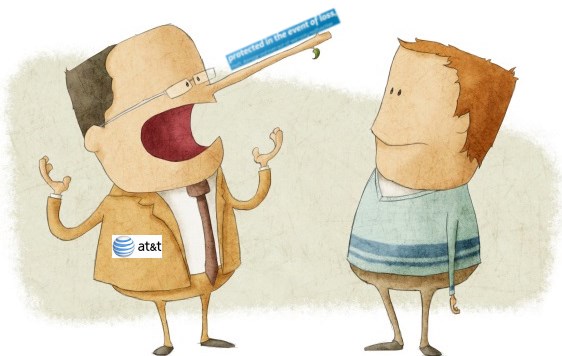 If you thought AT&T Mobile Insurance would bring you peace of mind if your expensive smartphone is ever lost, stolen, or damaged, think again.
If you thought AT&T Mobile Insurance would bring you peace of mind if your expensive smartphone is ever lost, stolen, or damaged, think again.
The wireless carrier and its partner Asurion have nine pages of sneaky terms and conditions that give the two companies a myriad of reasons to deny insurance claims and leave you with nothing after paying your $6.99 monthly insurance premium.
The Los Angeles Times reports one customer – Marianna Yarovskaya – learned this the hard way when she purchased AT&T’s insurance to cover her new iPhone 5S she bought before taking a trip to Indonesia. Sure enough, her new phone was swiped right out of her hotel room. Yarovskaya’s disappointment only got worse when her insurance claim was denied not once, or twice, but three times.
An Asurion representative explained to Yarovskaya her insurance claim was rejected because she was outside of AT&T’s network when she completed the last steps of her online registration for AT&T’s insurance. It turned out AT&T Insurance is worthless if customers enroll while using a Wi-Fi connection or any other service provider other than AT&T’s wireless data network.
“This is crazy,” Yarovskaya said. “They are saying that if you travel, the insurance becomes worthless.”
A careful review of the nine pages of barely penetrable terms and conditions unearthed the “tricks and traps” Asurion used to walk away from Yarovskaya’s claim.
On page six, AT&T and Asurion insist that “covered property must be actively registered on the service provider’s network on the date of loss and have logged airtime prior to the date of loss.”

To ordinary people, that would suggest that Yarovskaya would be covered as soon as she purchased and activated her new AT&T iPhone and service while in a Los Angeles AT&T store. That act left her “actively registered” as an AT&T customer. Asurion also specifies their insurance coverage territory is “worldwide,” which would indicate insured phones are covered wherever they are lost, stolen, or damaged.
But then there is pesky page eight — the “definitions” page, where Asurion gets to define the meaning of various English words and phrases as it sees fit.
Asurion’s definition of “covered property” is a device “actively registered on the service provider’s network and for which airtime has been logged after enrollment.”

When the Times asked Bettie Colombo, an Asurian spokeswoman, what that meant, she explained phones are not insured until the customer performs some wireless activity on AT&T’s network after signing up for coverage.
 Translation: You have to do something on your carrier’s wireless network after coverage begins for coverage to begin.
Translation: You have to do something on your carrier’s wireless network after coverage begins for coverage to begin.
If you are roaming, traveling overseas, or you use your phone with Wi-Fi and AT&T doesn’t see the device on its network after signing up for insurance, you are not covered. The language is so broad, it could also be interpreted to mean you have to be actively registered on an AT&T cell tower at the time of loss or damage or Asurion could walk away for that reason as well.
An insurance underwriter tells Stop the Cap! the real intent of this clause is to protect Asurion from customers signing up for insurance -after- losing or damaging their phone and then immediately filing an insurance claim. As a protection measure, the insurer wants to confirm it is insuring a working phone actually possessed by the owner before activating coverage. If customers registered for insurance on other devices or networks, AT&T wouldn’t have direct, absolute confirmation the customer is insuring a working phone. But most customers are unaware of this requirement, and if a claim arrives shortly after a customer signs up for coverage, insurance adjusters tend to be extra suspicious.
AT&T is staying out of the insurance dispute and declined to comment, leaving Yarovskaya with a $6.99 premium payment and $650 in replacement costs to buy a new phone.
The Times‘ opinion about the merits of AT&T’s insurance? “Buy it at your own peril.”
[flv]http://www.phillipdampier.com/video/ATT Mobile Insurance phone service 3-4-14.flv[/flv]
AT&T makes it look easy to sign up for device insurance, but navigating through the claims process and nine pages of terms and conditions leave a lot of room to deny your claim. (2:02)


 Subscribe
Subscribe AT&T is offering T-Mobile customers — and only T-Mobile customers — up to $450 to switch their wireless service to AT&T, but is the switch actually worth it? A close inspection of AT&T’s fine print suggests some customers might want to think twice.
AT&T is offering T-Mobile customers — and only T-Mobile customers — up to $450 to switch their wireless service to AT&T, but is the switch actually worth it? A close inspection of AT&T’s fine print suggests some customers might want to think twice.
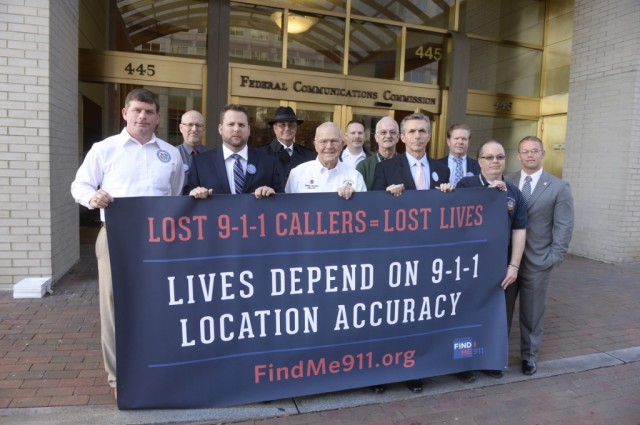
 Deanna Cook of Rylie, Tex is just one victim who might still be alive today if 9-1-1 operators could have tracked her precise location. Last August, Cook called 9-1-1 from her home but was too badly injured in a domestic violence incident to provide her address. Operators relied on the current system to access her location. It took just a few seconds to find the cell tower Cook was accessing to place the call. Shortly after that, Cook’s street and general location became available in about a block-wide circumference, part of what the industry calls “Phase One” data. But the operator had to wait nine minutes for Cook’s wireless provider to finally pinpoint what they believed to be her exact address, the critical “Phase Two” data that can bring help to the right door.
Deanna Cook of Rylie, Tex is just one victim who might still be alive today if 9-1-1 operators could have tracked her precise location. Last August, Cook called 9-1-1 from her home but was too badly injured in a domestic violence incident to provide her address. Operators relied on the current system to access her location. It took just a few seconds to find the cell tower Cook was accessing to place the call. Shortly after that, Cook’s street and general location became available in about a block-wide circumference, part of what the industry calls “Phase One” data. But the operator had to wait nine minutes for Cook’s wireless provider to finally pinpoint what they believed to be her exact address, the critical “Phase Two” data that can bring help to the right door.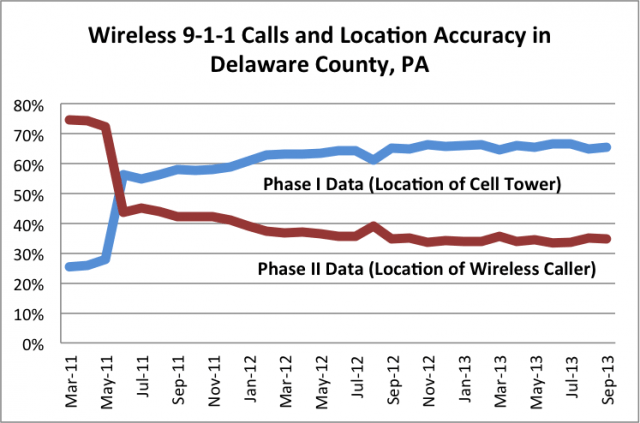
 The Coalition notes the FCC’s data shows an alarming drop in more accurate “Phase Two” data from 75 percent of all wireless calls placed during March 2011 to just 35% in September of this year.
The Coalition notes the FCC’s data shows an alarming drop in more accurate “Phase Two” data from 75 percent of all wireless calls placed during March 2011 to just 35% in September of this year.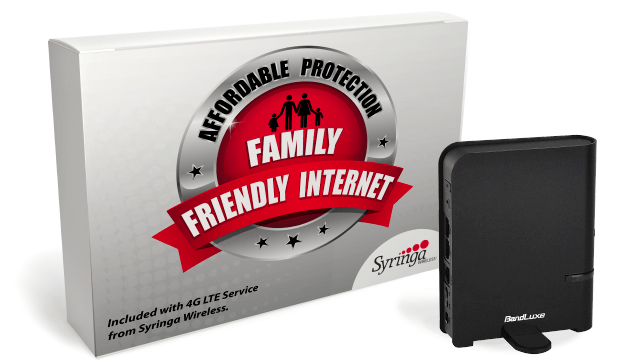 An independent cell phone provider in Idaho has found a unique niche to innovate beyond offering traditional cell phone service by launching unlimited 20Mbps home broadband Internet access over its wireless 4G LTE network.
An independent cell phone provider in Idaho has found a unique niche to innovate beyond offering traditional cell phone service by launching unlimited 20Mbps home broadband Internet access over its wireless 4G LTE network.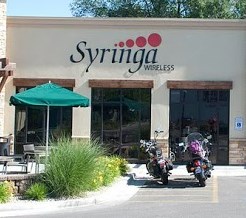 Syringa’s fixed wireless broadband puts the company in a stronger position for a Wireless Internet Service Provider (WISP), because it is able to also market traditional cell phone service for its rural customer base. Syringa still sells unlimited smartphone data plans and has a roaming agreement with a major national carrier for cell phone users traveling outside of Syringa’s home service area.
Syringa’s fixed wireless broadband puts the company in a stronger position for a Wireless Internet Service Provider (WISP), because it is able to also market traditional cell phone service for its rural customer base. Syringa still sells unlimited smartphone data plans and has a roaming agreement with a major national carrier for cell phone users traveling outside of Syringa’s home service area.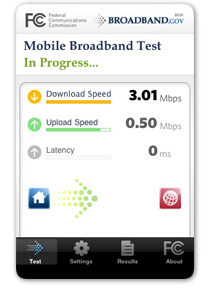 Are you getting the mobile broadband speeds your provider advertises for its whiz-bang 4G network? How do you know which carrier really delivers?
Are you getting the mobile broadband speeds your provider advertises for its whiz-bang 4G network? How do you know which carrier really delivers?